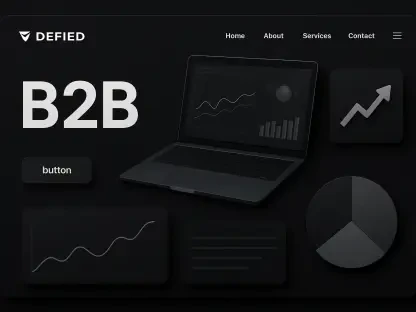Black Friday shoppers click with intent, but when ads push items that vanished from shelves hours ago, budgets evaporate, conversion rates crater, and campaign signals warp in ways that echo long after the rush ends. In this roundup, paid search leaders, ecommerce operators, and analytics teams weigh in on why stockouts still chew through spend and what fixes have actually stuck under pressure.
Practitioners aligned on a tough headline: most retailers still fund clicks after inventory hits zero. Media buyers pointed to a recent cross‑retailer analysis showing the vast majority kept campaigns live 24–48 hours past stockout, a window that swells during peak traffic. Operational leaders added context: with Shopping taking a dominant share of retail search spend, even moderate leakage becomes a material P&L drag.
Black Friday’s Hidden Money Pit: Why Stockouts Turn Shopping Ads into Sinks for Spend
Acquisition teams stressed the immediate hit: non‑converting clicks burn budget while depressing blended conversion rate, which then cools auction relevance. Meanwhile, merchandising leads highlighted the customer cost—shoppers bounce, frustration rises, and loyalty erodes when the product page confirms the bad news after the click.
However, platform veterans emphasized the downstream penalty. Lower performance signals bleed into bid strategies, forcing higher effective CPCs later. One retail group cited a high‑profile case where a national brand promoted sold‑out deals during peak hours, stoking complaints and squandering prime inventory for future winning SKUs.
The Mechanics and Fallout of Advertising What You Can’t Ship
Performance strategists agreed the root cause is governance, not intent. Most teams run daily feed refreshes designed for normal cadence, not Black Friday velocity. Operations leaders argued that default platform safeguards reduce, but do not eliminate, the risk, especially when variant‑level stock diverges by size or color.
In contrast, conversion specialists warned that even a small fraction of out‑of‑stock clicks poisons quality signals disproportionately. The consensus: slowness at the feed tier multiplies cost at the auction tier.
The 24–48 Hour Blind Spot: Slow Stock Feeds That Keep Ads Live and Budgets Draining
Media buyers described refresh patterns in plain terms: many retailers update approximately every 24 hours, some within a business day, a few as slow as two days. During peak, that lag stretches across millions of impressions. Under strain, caching, batched exports, and manual approvals add yet another beat.
Ops directors urged tighter SLAs between OMS, PIM, and Merchant Center. Near‑real‑time backfill on critical SKUs, especially doorbusters, reduced leakage without re‑platforming. Teams that shortened feeds to hourly or on change saw spend efficiency rebound the same day.
Algorithmic Hangover: Corrupted Signals That Depress Rankings, ROAS, and Future Bids
Bid strategy owners reported a familiar cycle: out‑of‑stock clicks dilute conversion data, automated bidding learns the wrong lesson, and top placements slip. Recovering rank then costs margin as systems relearn post‑peak.
Analytics leads recommended isolating damaged products and resetting learning faster. Suppressing compromised SKUs for a cooling period helped stabilize portfolios while guardrail rules filtered volatility.
When Speed Is Strategy: Real-Time Syncing, Regional Stock Nuance, and the Next Wave of Automation
Engineering partners pushed event‑driven updates: webhooks from the cart and warehouse trigger instant availability changes. For multi‑location inventory, geo‑aware ads limited exposure to shippable regions, improving both user experience and ROAS.
Automation advocates favored layered controls: feed‑level sync for catalog breadth, API overrides for hero SKUs, and emergency kill‑switches for sudden sellouts. The shared view: speed compounds value when the stakes spike.
Beyond the Feed: Safeguards at Checkout, Alerting Systems, and Cross-Channel Spillover Controls
CRO teams implemented soft stops on PDP and checkout—back‑in‑stock prompts and alternatives prevent wasted clicks from turning into brand damage. This also signals demand for replenishment.
Channel managers added real‑time alerting. When stock hits thresholds, Shopping, Search, and Social receive synchronized pauses, avoiding the common trap where one channel keeps spending while another already shut off.
What Winning Retailers Do Differently Right Now
High performers codified playbooks before the rush. They prioritized SKU tiers, accelerated sync for top movers, and prebuilt rules that pause ads on stock dips or variant sellouts. Crucially, they aligned merchandising, media, and engineering on escalation paths.
They also measured leakage explicitly. Benchmarks for out‑of‑stock impression share, wasted spend, and time‑to‑pause kept teams honest and drove continuous tuning between events.
Closing the Loop Before the Click: Prepare Your Playbook for the Next Peak
The most useful takeaways were concrete: compress inventory latency, adopt event‑driven updates for priority SKUs, and enforce cross‑channel shutdowns when stock crosses thresholds. Teams that layered fast feeds, API controls, and learning resets preserved ROAS when it mattered.
For a deeper dive, practitioners pointed readers toward studies that quantified the 24–48 hour gap, post‑peak recovery tactics, and governance templates that cut waste without overhauling stacks.









